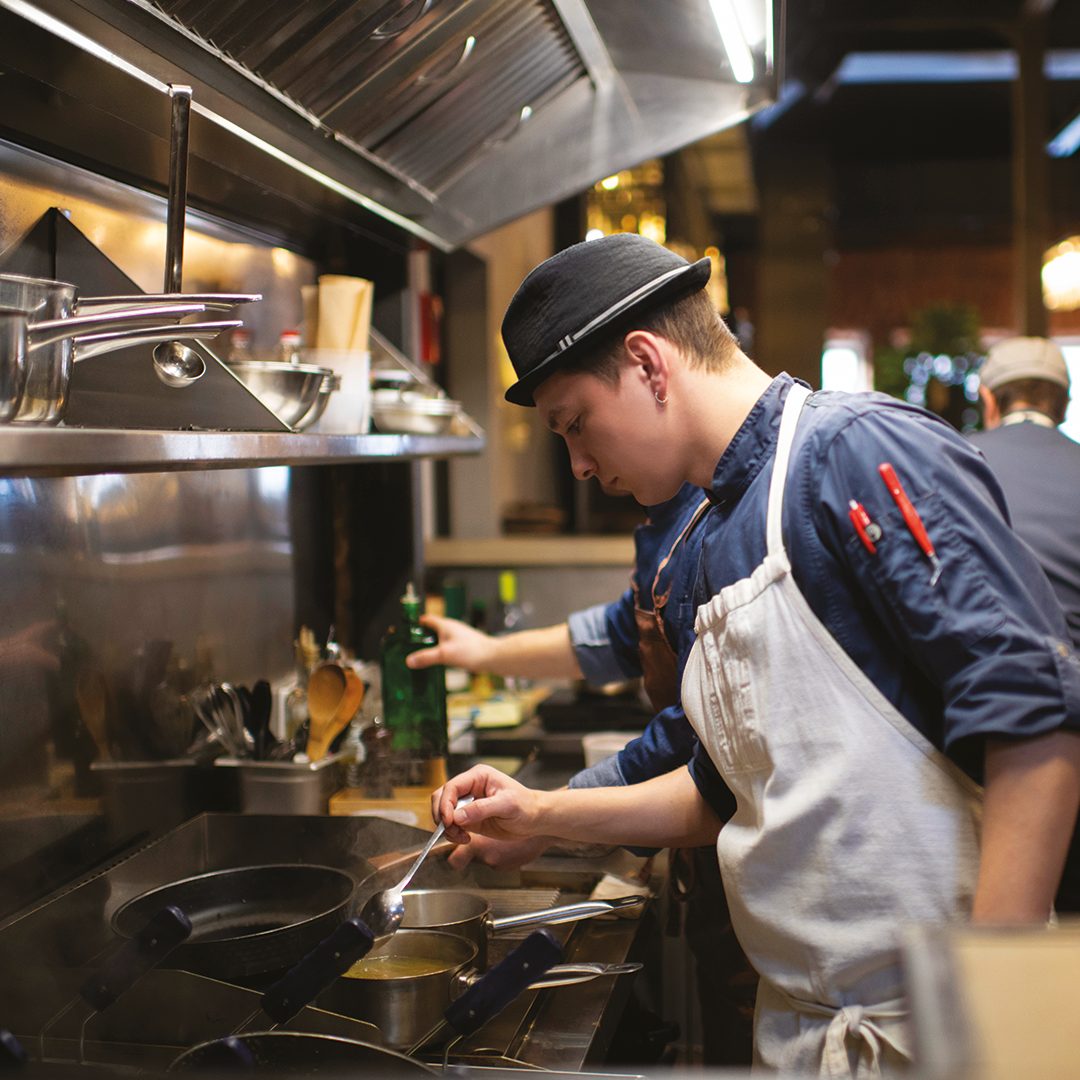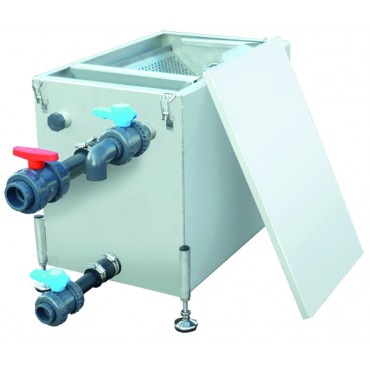- Menu
-
Your needs
If you want to install a new bathroom, an additional toilet, a laundry room, connect the condensate drain, all without major works, SFA has the solution that meets your needs. Without much work you can simply drain all the water away.
-
Our products
For a boiler, an air conditioner, a shower, a toilet, a kitchen, a laundry room, a refrigerated display case, a house or a complete building, SFA has been the specialist in the removal of all types of water since 1958, whether you are a private individual or a professional, we have the solution that meets your needs.
-
SFA group
The historical inventor of the SANIBROYEUR® has forged its expertise over time. Discover the history and values of the SFA Group.
- Blog
- Contact
-
Professionals
- Download Hub
Installing a grease trap

Following Article 29-2 of the environmental code of the departmental health regulations, the setting up of a grease trap in a community kitchen is compulsory. This is meant to prevent any matter from damaging or disrupting the sewage network. These measures specifically target animal and vegetable-based fats and oils in kitchen wastewater. Installing a grease trap is therefore essential in restaurants and for food industry professionals, such as butcheries, delis, bakeries, pastry shops, fisheries, caterers, etc. How does a grease trap work? When to set up a grease trap? How does one go about emptying and cleaning the tank? Which grease trap to choose from? Here is everything you need to know to handle professional kitchen wastewater.
Contact Us
The grease trap: an introduction
A grease trap is a piece of equipment used to filter out polluting matter originating from culinary activities, such as fats, oils, and macro waste before they make it to the sewer network. It is a device whose function is to block fat and waste from getting through. This grease separation process takes place upstream of the discharge of wastewater into the sewer network. The objective is to avoid polluting waterways and obstructing ducts. The grease trap is a compact device that can be buried or placed above ground. A buriable fat separator is usually a communal kitchen's feature of choice. This is the case, for example, for a company or school's cafeteria, hospitals, nursing or retirement homes, etc. Fat separators are usually used as restaurant kitchen equipment. A grease trap operates as follows: installed right before the wastewater draining pipe, it disbands fats and oils when they enter the degreaser. They then rise to the surface, while large particles (such as food remains) drop at the bottom of the tank. The depolluted water is then discharged through a dedicated outlet into the pipes towards the sewer network or a house's septic tank.
When should you set up a grease trap?
As we have seen, it is mandatory for any establishment that generates greasy or oily food waste to get a grease trap set up. What equipment to choose depends on the type of kitchen. A distinction is usually made between:
◾ The grease trap for catering services. This one is adapted to an important daily influx. This trap is available in a ready-to-use or buriable version;
◾ The mobile restaurant grease trap. This one is suitable for food service stands, food trucks, small restaurants, etc. This equipment is generally intended for kitchens with a portable dishwasher;
◾ The grease trap for restaurant dishwashers. This one is available in various variations and handles waste from 1 to 100-guest restaurants.
Be sure to think of setting up your grease trap with care. Whether on the ground or buried, the equipment must remain readily accessible. It is necessary to ensure maintenance of the grease separator by draining and cleaning its tank regularly. The frequency at which you need to empty the grease trap ranges from two to five times a year, depending on the number of guests. Greasy waste must be collected following a specific process. You can hire a company that specializes in such a service. Feel free to ask around for several quotes to compare the prices and services offered before making a decision.
Finally, note that you are entitled to subsidies from either the Chamber of Commerce and Industry in your department of residence or the local Water Agency. Under certain conditions, these subsidies are even approved upon purchasing and setting up a kitchen degreaser.
If you do not own any restaurant, you are not expected to set up a grease separator in your home. Do not, however, pour frying oils into your kitchen sink, as to avoid damaging/obstructing your piping system and generating odors.
SFA's grease traps
A renowned specialist in the treatment of professional and domestic wastewater, SFA has designed a complete range of tanks and grease separators. Our various devices meet all professional kitchens’ grease-processing needs for cooking oils and organic waste.
Here is a quick overview:
The Sanigrease S grease trap
There are four versions of the Sanigrease S communal kitchen grease trap available. You get to choose different separator or desilter compartment capacities and whether or not you want an integrated ventilation system to go with it. This wastewater-degreasing equipment is suitable for catering kitchens serving up to 443 daily meals. Its compact 30-inch width allows for easy set-up and maintenance. Lastly, the DN 110 drainage pipe of the Sanigrease S grease trap facilitates the collecting of heavy waste.
The Sanigrease SU grease trap
Also intended for communal kitchens, the buriable Sanigrease SU grease trap is available in five versions. They come with desilter capacities ranging from 100 to 400 liters, while their total tank volumes vary from 340 to 1,500 liters. Once again, the diameter of the draining pipe is sufficient to recover all macro waste present in the water.
The Sanigrease T24 grease trap
This grease trap is suitable for frost-free installations in smaller kitchens. The Sanigrease T24 mobile grease trap can be easily placed under a professional sink or connected to a portable dishwasher. Its tank has a total capacity of 24 liters, and the maximum oil content volume that it can handle is 8 liters. It is, therefore, necessary to conduct proper daily emptying of this degreaser and carry out regular cleaning.
The Sanigrease T grease trap
Lastly, to equip your professional kitchen, SFA presents you with a grease trap especially made for restaurant dishwashing. It consists of a stainless steel tank with a 304-liter capacity. The device stands far away from the ground to better optimize hygiene.
Maintenance is facilitated by the presence of drain valves and by the removable peelings basket. Four models compose our range of grease traps, all with different handling capacities:
◾ For a kitchen serving 1 to 40 guests, choose the Sanigrease T 40;
◾ For a kitchen serving 41 to 60 guests, choose the Sanigrease T 60;
◾ For a kitchen serving 61 to 80 guests, choose the Sanigrease T 80;
◾ For a kitchen serving 81 to 100 guests, choose the Sanigrease T 100.


